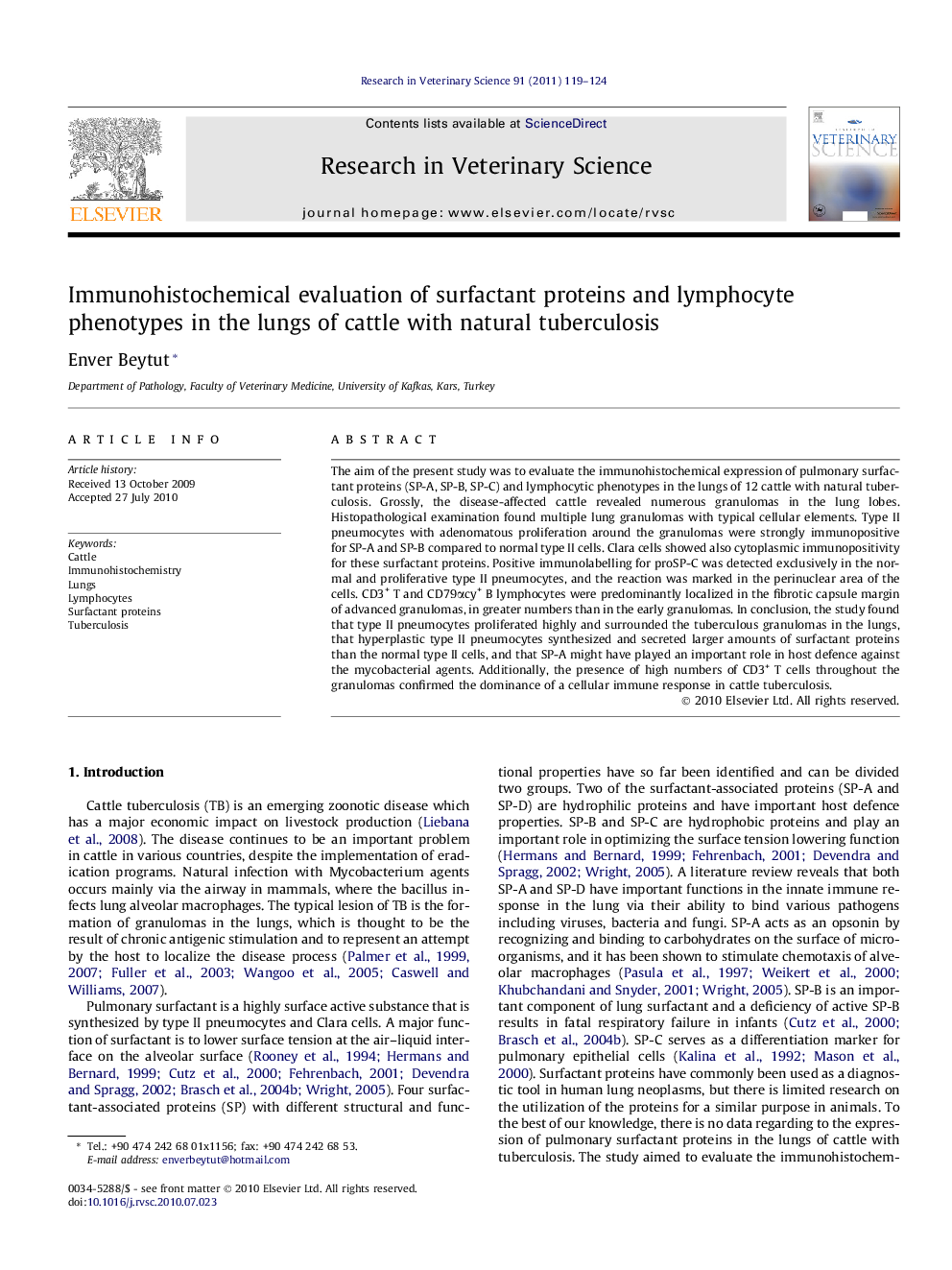| Article ID | Journal | Published Year | Pages | File Type |
|---|---|---|---|---|
| 2455620 | Research in Veterinary Science | 2011 | 6 Pages |
Abstract
The aim of the present study was to evaluate the immunohistochemical expression of pulmonary surfactant proteins (SP-A, SP-B, SP-C) and lymphocytic phenotypes in the lungs of 12 cattle with natural tuberculosis. Grossly, the disease-affected cattle revealed numerous granulomas in the lung lobes. Histopathological examination found multiple lung granulomas with typical cellular elements. Type II pneumocytes with adenomatous proliferation around the granulomas were strongly immunopositive for SP-A and SP-B compared to normal type II cells. Clara cells showed also cytoplasmic immunopositivity for these surfactant proteins. Positive immunolabelling for proSP-C was detected exclusively in the normal and proliferative type II pneumocytes, and the reaction was marked in the perinuclear area of the cells. CD3+ T and CD79αcy+ B lymphocytes were predominantly localized in the fibrotic capsule margin of advanced granulomas, in greater numbers than in the early granulomas. In conclusion, the study found that type II pneumocytes proliferated highly and surrounded the tuberculous granulomas in the lungs, that hyperplastic type II pneumocytes synthesized and secreted larger amounts of surfactant proteins than the normal type II cells, and that SP-A might have played an important role in host defence against the mycobacterial agents. Additionally, the presence of high numbers of CD3+ T cells throughout the granulomas confirmed the dominance of a cellular immune response in cattle tuberculosis.
Related Topics
Life Sciences
Agricultural and Biological Sciences
Animal Science and Zoology
Authors
Enver Beytut,
